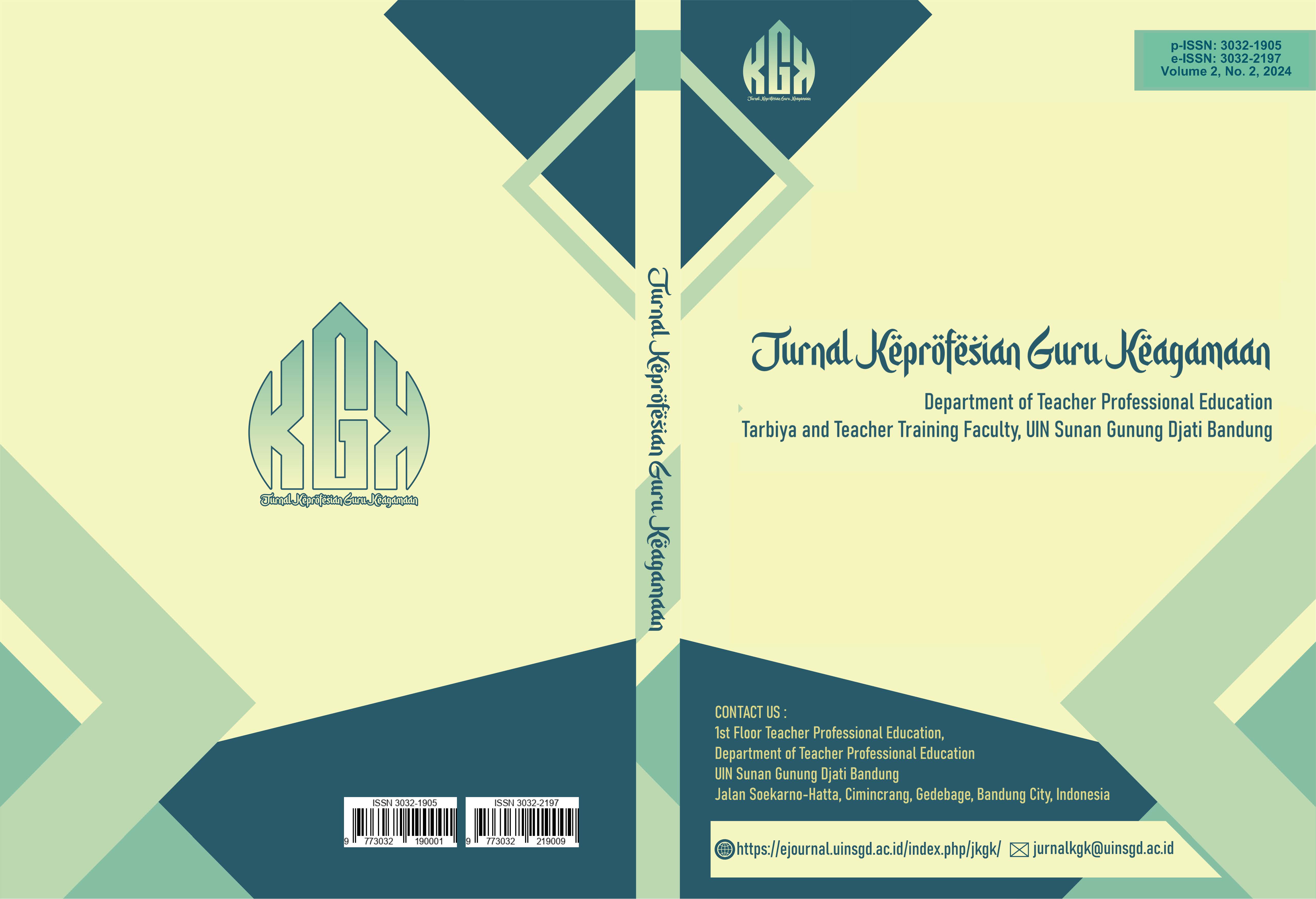Improving Student Learning Outcomes Using the Mind Mapping Method
DOI:
https://doi.org/10.15575/jkgk.v2i2.917Keywords:
Exemplary Asmaul Husna, Learning Outcomes, Mind MappingAbstract
A preliminary study at SDN 224 Cijambe found two key issues: students' limited understanding of Islamic Religious Education and low learning outcomes on Asmaul Husna in grade V. This study aims to: 1) examine the learning process with Mind Mapping, 2) assess learning outcomes after using this method, and 3) determine if Mind Mapping can improve student performance in PAI on Asmaul Husna material. The research, a classroom action study (PTK), used Elliot's Spiral model across two cycles, each involving planning, action, observation, and reflection stages. Conducted in grade V with 28 students, data collection utilized observation, tests, and documentation. Results showed that only 5 students (17.86%) met objectives in the pre-cycle, increasing to 8 students (28.57%) in the first cycle and reaching 20 students (71.43%) in the second cycle. Thus, Mind Mapping was found to significantly enhance learning outcomes, supporting student comprehension and engagement in PAI at SDN 224 Cijambe, Bandung.
References
Aryanti, N., Ardiansyah, W., & Ujihanti, M. (2020). The Metacognitive Self-Monitoring Strategies on Improving Students’reading Comprehension Nd of 2 Grade Students. I-Manager Publications, 10(3), 64–77.
Davies, M. (2011). Concept mapping, mind mapping and argument mapping: what are the differences and do they matter? Higher Education, 62, 279–301.
Denim, S. (2014). Perkembangan peserta didik. Bandung: Alfabeta.
Juniantari, I. G. A. S., & Kusmariyatni, N. N. (2019). Pengaruh Model Pembelajaran Kooperatif Two Stay Two Stray Berbantuan Mind Mapping terhadap Hasil Belajar IPA. Jurnal Ilmiah Sekolah Dasar, 3(3), 378. https://doi.org/10.23887/jisd.v3i3.19478
Mahmud, M. E., Baharun, H., Asykur, M., & Rochmatin, Z. (2022). Increasing Teacher Professionalism Through Change Management in Madrasah: Kurt Lewin’s Perspective. Southeast Asian Journal of Islamic Education, 5(1), 47–63.
Malik, R. S. (2018). Educational challenges in 21st century and sustainable development. Journal of Sustainable Development Education and Research, 2(1), 9–20.
Masganti, M. (2017). Upaya Meningkatkan Kemampuan Motorik Kasar Anak Usia 5-6 Tahun Melalui Kegiatan Menari Animal Chicken Dance. Jurnal Raudhah, 5(2).
Miswanto, M. (2014). Evaluasi Pendidikan Agama Islam Berbasis Karakter. Madaniyah, 4(2), 151–164.
Rathee, N., & Islam, N. (2016). Piaget’s Stages of Cognitive Development of the Child.
Risma, N. (2021). Pengaruh Model Cooperative Learning Tipe Mind Mapping terhadap Kemampuan Komunikasi Matematis Siswa SMP. UIN Ar-Raniry.
Sardiman, A. M. (2019). Interaksi dan motivasi belajar mengajar.
Silvia, A. (2023). Pembelajaran Siswa dengan Metode Card Sort pada Pembelajaran PAI Materi Pokok Mengenal Rosul-Rosul Allah Swt pada Peserta Didik. ITTIHAD, 5(1).
Sit, M. (2017). Psikologi perkembangan anak usia dini edisi pertama. Kencana.
Vessels, G., & Huitt, W. (2005). Moral and character development. National Youth at Risk Conference, Savannah, GA, March, 8–10.
Wahyudi, I. (2024). Penggunaan Teknik Mind Mapping dalam Pembelajaran Pendidikan Agama Islam untuk Memfasilitasi Pemahaman Konsep Yang Aktif dan Kreatif SD IT Salsabila Palembang. Unisan Jurnal, 3(2), 651–662.
Zubaıdah, S., Fuad, N. M., Mahanal, S., & Suarsını, E. (2017). Improving creative thinking skills of students through differentiated science ınquiry ıntegrated with mind map. Journal of Turkish Science Education, 14(4), 77–91.
Downloads
Published
How to Cite
Issue
Section
License
Copyright (c) 2024 Authors

This work is licensed under a Creative Commons Attribution-ShareAlike 4.0 International License.




